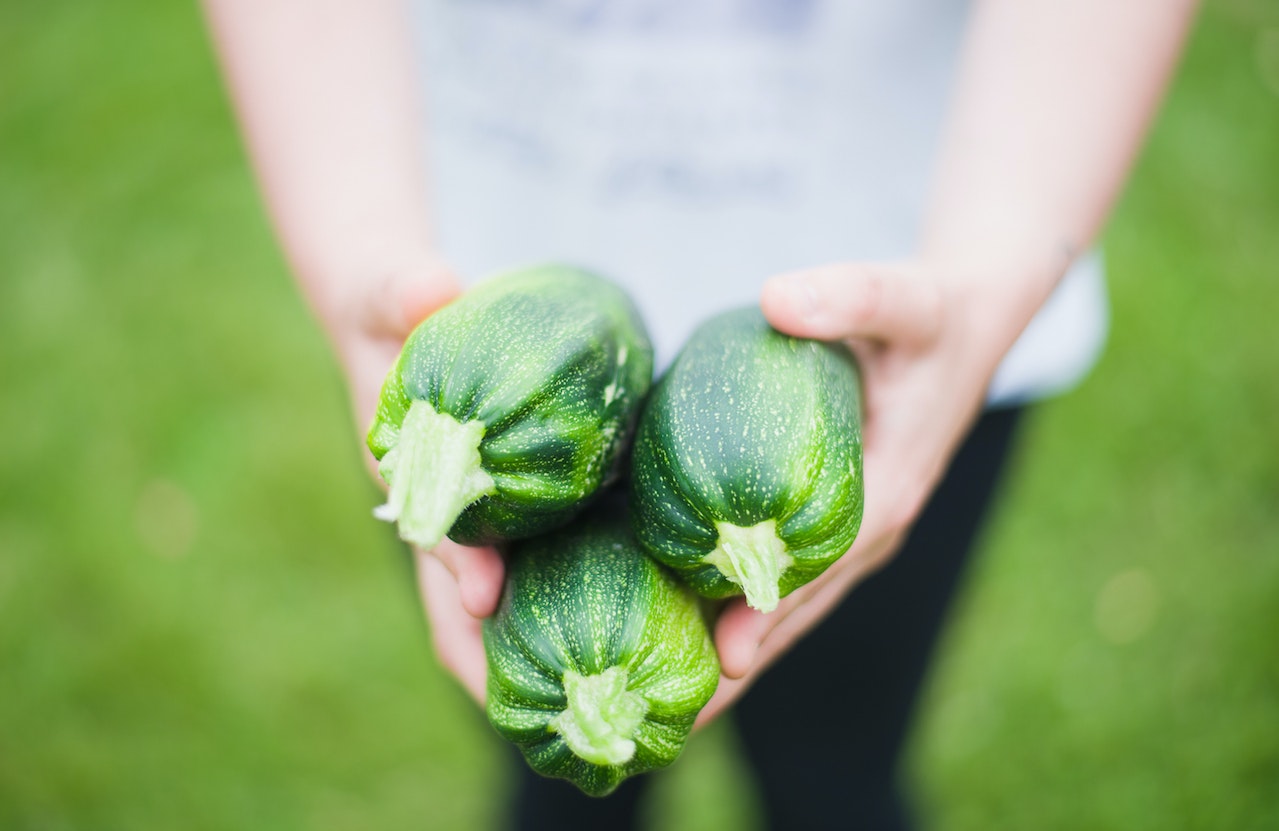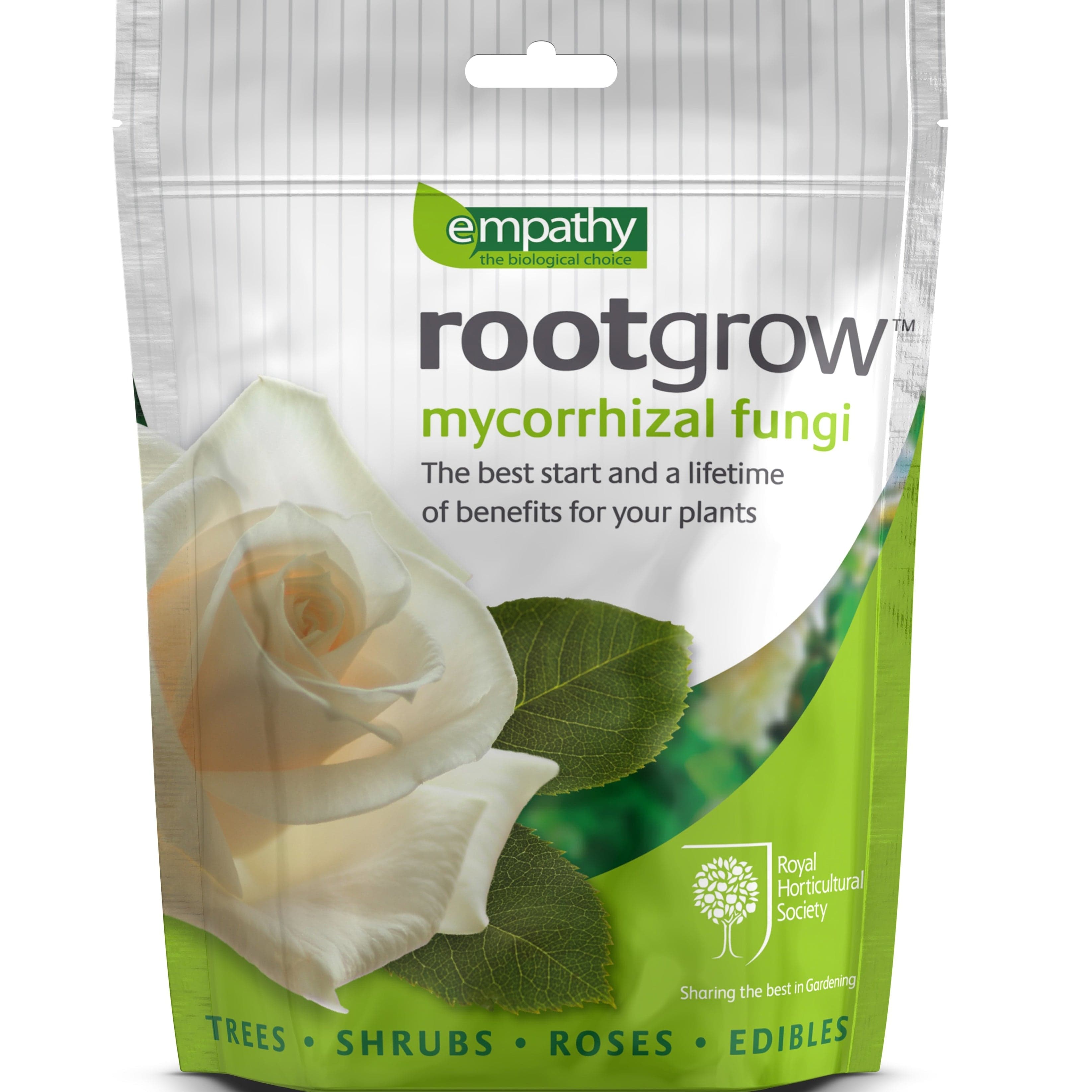Growing Courgettes: The Complete Guide

Courgettes are one of the easiest vegetables to grow, so they’re an ideal choice for beginners and fun to grow with children, giving you a confidence boost as well as baskets full of tasty produce all summer. They’re so much tastier than shop-bought, and you get the bonus of courgette flowers too, a delicacy rarely found outside of a market in Italy or a fancy restaurant here. Follow our growers’ advice to grow them like a pro!
Jump to:
Growing courgettes from seed
Courgettes have large seeds which are easy to handle and plant. They grow quickly, so plant just one in each pot or coir pellet and don’t be tempted to go too early as they’re tender plants and shouldn’t be planted outside until late May or June. Choose the variety you most like the look of, as they’re all easy to grow. When your seedlings are at least 6cm high and have a couple of pairs of leaves, you can plant them outside, but make sure to protect your young plants from slugs by covering them with a cloche or using one of the slug control methods below.
Growing courgettes from plants
Courgette plants are an easier way to grow - you can buy them in spring and grow them on in pots or plant them straight into their final positions if the last frost date has passed. This varies according to where you live, and can be checked here. Plant them in soil with lots of good compost or manure mixed in, and make sure you have robust slug protection in place.
When can I plant courgettes?
If you’re growing from seed, starting them off indoors in April or May is best, but you can also sow directly outdoors in May or June for a later crop. Courgette plants will be ready to plant outside from May to June. Make sure the last frost is gone and the weather has turned consistently warm. There’s no rush, as your plants will still be cropping well into autumn.
What kind of soil do courgettes need?
Courgettes need fertile, well-draining soil. If yours is a bit on the dry or clay-heavy side, mix in plenty of garden compost into your garden soil until it becomes crumbly and rich - three parts compost to one part garden top soil is a good mix to aim for. Courgettes are hungry plants, so they’ll benefit from an initial feed added to the soil. If you’re really well prepared you can add a layer of manure to your soil the autumn before, and let it break down. This will add extra nutrients to the soil as well as improve its texture.
Where should I position my courgette plants?
Plant your courgettes in a sunny, sheltered spot well away from cold winds. The plants will spread out quite a lot once they’re fully grown, so allow 90cm of space between each one.
How much sun do courgettes need?
Full sun is the best for courgette production - your plants will thrive on six to eight hours of direct sunlight every day throughout spring and summer, but will also be fine with a little light shade, especially if this falls in the afternoon.
How to plant courgettes
Dig a hole big enough for the plant's roots to fit comfortably, place it in the centre, fill in with soil and press down the soil around the plant gently. Give the soil a good watering to let it settle around the roots.
Can you grow courgettes in pots?
You can plant courgettes in pots, or even grow bags, as long as they have enough space to spread out. Use pots at least 45cm wide and deep (about 40L). Again, dig a hole big enough for the plant's roots to fit in plus a bit more space. Fill in with soil and press down gently around the plant, then give the soil a good watering to let the soil settle around the roots. You’ll probably get 2-3 courgette plants to a grow bag - again, make sure they have plenty of space between them to spread out as they do tend to sprawl!

Courgette plant maintenance
Watering courgette plants
Courgettes like consistently moist soil, so be careful not to let them dry out (it makes the fruits taste bitter if you do). Check and water them regularly, especially those in pots - in the height of summer you can expect to be doing this daily. If you can, water them in the morning and avoid splashing the leaves, to prevent moulds and mildews developing.
Do you need to feed courgette plants?
Courgettes need a fair bit of feeding to keep producing lots of lovely fruits. When your courgette plant starts flowering, feed it every week with a potassium rich fertiliser such as liquid tomato feed, which encourages the fruits to form. Courgettes also benefit from a mulch to provide them with extra nutrients, retain water in the soil and keep the weeds down around them. Using straw or bark chips as a mulch also keeps the slugs away.
Pollinating courgette plants
In a garden with lots of pollinator friendly plants, you should see plenty of bees, butterflies and hoverflies working hard to pollinate your courgette plants. If you’re high up and growing on a balcony or you’re growing under cover however, they can be a bit more sparse. To help out, you can hand pollinate your plants - use a paintbrush and transfer pollen from one flower to another by gently brushing inside the middle of each flower on the plant.

When to harvest courgette plants
Most courgettes are best harvested when they are around 10-20cm long, but try a few when they’re ‘baby’ sized too! Longer varieties such as Tromboncino Albenga are better harvested when they’re around 25-30cm long. Make sure you harvest regularly as this will promote more courgettes to grow and encourage your plants to up their game - the best time to pick is in the morning when their water content is higher and the fruits are juicier. Cut the courgettes at the soft stalk just above the fruit with a sharp, clean knife to harvest them. If you’re also harvesting the flowers to eat, take care that they don’t fall off onto the soil as you pick. The best flowers for eating are the male ones, which you can tell by their longer stalks and the fact that they don’t have a courgette attached to them.
Why is there a marrow in my courgette patch?
There’s always one. You forget to pick courgettes for a few days or you go away on holiday and the next thing you know, there’s a bl**dy great marrow there. A marrow is what happens when you leave a courgette to grow beyond the bounds of reason. They are edible and some people do like them - notably Coronation Street’s Deirdre Barlow… but they’re not generally something to aspire to, unless you want to enter the village show’s giant vegetable category.

Storing your courgettes
Courgettes will keep for about a week at room temperature, or for about three days in the fridge, so it’s best to store them in a cool, dry place in your kitchen. As they’re mostly composed of water, they can’t be frozen as they are as they’ll turn to mush, but I find they’re perfectly good frozen if you grate them or chop them in a food processor and portion them into freezer bags to use throughout the following year. Courgette flowers are really delicate and need to be eaten on the day they’re picked.
How to use up a courgette glut
Make no mistake, unless you only grow one or two plants, you WILL end up with more courgettes than you can handle - each plant can produce twenty fruits - but if you like a challenge and you love courgettes, finding new ways to eat them can be fun. Chop one or two, saute and add them to pasta, pizza, curry or quiche, or leave them raw and spiralise to make a healthy courgetti with pasta sauce. Courgette chutney, courgette soup and courgette fritters are also good. There are lots of great ideas here - the chocolate courgette cake is sublime, but I always add a whole 200g bar of grated dark chocolate to the mixture so maybe that’s why.
Courgette plant problems
Powdery mildew
Powdery mildew is a fungal disease that usually attacks the leaves and stems of a plant, leaving a gross white powdery residue, stunting growth and affecting crop yields. The best way to prevent it is to plant your courgettes far enough apart to make sure the air can circulate freely between them. It also helps to keep the ground free of weeds, water at the base of the plant in the morning so there’s time for it to evaporate in the sun and avoid splashing the leaves. If your plant is suffering from powdery mildew, just prune away the infected leaves at the stem and sterilise your tools between each plant. You can also spray the plant with a mix of one teaspoon of baking soda mixed with a litre of water to help prevent reinfection.
Whitefly
Whiteflies look like small white moths and are most commonly found on the underside of leaves. If left to their own malign devices they will feed on the leaves, damaging them and turning them yellow. Your best defence against whitefly is to simply spray your plant down with some water or a mix of water, vegetable oil and soap, aiming it at the whiteflies to try and wash them off. Make sure you check the whole plant and get as many of the fiends off as possible.
You can also plant companion plants such as marigolds near your cucumbers. Marigolds deter whitefly as well as attracting ladybirds and hoverflies which will come and feast on the pests.
Aphids
Aphids are small green bugs that cluster on the plant stems, particularly at the joints, and also the underside of leaves. They cause leaves and fruit to become discoloured and misshapen. Aphids also leave behind a sticky residue known as honeydew which can then promote the growth of a fungus known as sooty mould. Delightful.
Like whiteflies, ladybirds and hoverflies enjoy eating aphids so planting marigolds nearby will help control them. You can also use soapy water to blast the aphids off the plant. Effective and cathartic.
Slugs and snails
Slugs and snails can quickly devour young plants and destroy them before they’ve even had a chance to grow. They can affect the fruit as well, causing what looks like little bite marks.
The best non-lethal way to keep them away is with a barrier - this can be made of copper wire, which will react with the slug’s mucus to deter them, or crushed eggshells/gravel which they find difficult to cross.
In case of severe slug attacks, wool pellets are a humane and less harmful alternative to the blue chemical slug pellets you can buy, and won’t harm beneficial wildlife such as hedgehogs. You may also have some luck with beer traps - this is what supermarket own brand lager was made for!














